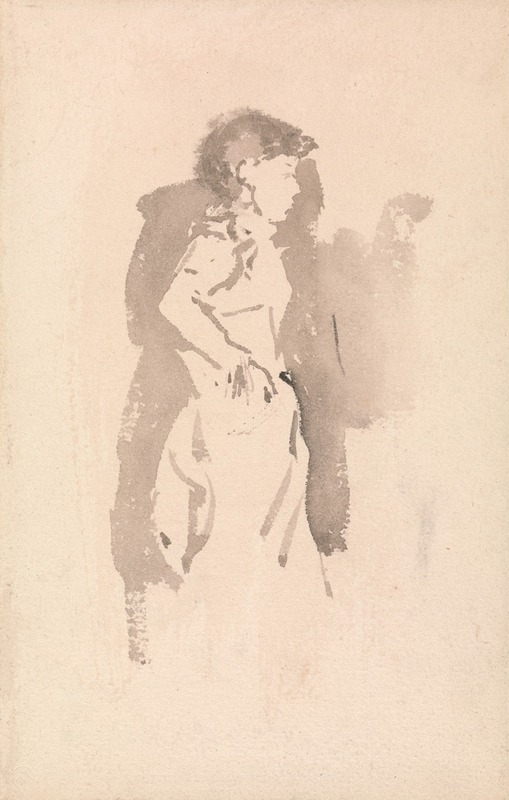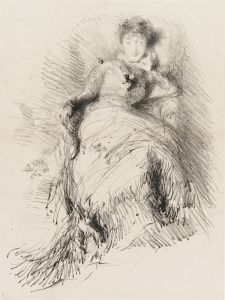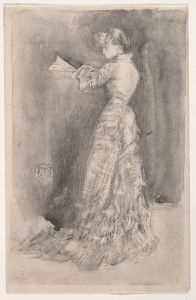
Portrait of Rosa Corder
A hand-painted replica of James Abbott McNeill Whistler’s masterpiece Portrait of Rosa Corder, meticulously crafted by professional artists to capture the true essence of the original. Each piece is created with museum-quality canvas and rare mineral pigments, carefully painted by experienced artists with delicate brushstrokes and rich, layered colors to perfectly recreate the texture of the original artwork. Unlike machine-printed reproductions, this hand-painted version brings the painting to life, infused with the artist’s emotions and skill in every stroke. Whether for personal collection or home decoration, it instantly elevates the artistic atmosphere of any space.
James Abbott McNeill Whistler's "Portrait of Rosa Corder" is a notable work by the American-born, British-based artist, renowned for his contributions to the Aesthetic Movement. Painted in 1879, this portrait captures Rosa Frances Corder, an English artist and a figure associated with the Pre-Raphaelite circle. Whistler's portrait of Corder is a testament to his mastery in capturing the essence and character of his subjects with a refined and subtle approach.
Rosa Corder was known not only for her own artistic talents but also for her connections with prominent figures in the art world of her time. She was a protégée of Dante Gabriel Rossetti, a leading figure in the Pre-Raphaelite Brotherhood, and was involved in the artistic and social circles of late 19th-century London. Her relationship with Rossetti and her own artistic pursuits made her a fascinating subject for Whistler, who was known for his interest in portraying individuals who were part of the cultural elite.
Whistler's approach to portraiture was distinct and innovative. He often focused on the harmony of color and form, emphasizing the aesthetic qualities of the painting over strict realism. In "Portrait of Rosa Corder," Whistler employs a limited palette, using subtle gradations of tone to create a sense of depth and atmosphere. The background is understated, allowing the viewer's attention to remain on Corder herself. Whistler's use of soft, fluid brushstrokes and his attention to the play of light and shadow contribute to the overall elegance and sophistication of the portrait.
The composition of the painting is carefully considered, with Corder depicted in a three-quarter view, her gaze directed slightly away from the viewer. This pose, combined with the serene expression on her face, imbues the portrait with a sense of introspection and poise. Whistler's ability to convey the personality and inner life of his subjects is evident in this work, as he captures Corder's intelligence and grace with subtlety and nuance.
"Portrait of Rosa Corder" is also significant for its reflection of Whistler's artistic philosophy, which emphasized "art for art's sake." This concept, central to the Aesthetic Movement, advocated for the appreciation of art based on its beauty and form rather than its narrative content or moral message. Whistler's focus on the aesthetic qualities of the portrait aligns with this philosophy, as he creates a work that is both visually pleasing and artistically sophisticated.
The painting is housed in the Isabella Stewart Gardner Museum in Boston, Massachusetts, where it continues to be appreciated by art enthusiasts and scholars alike. It remains an important example of Whistler's portraiture and his contribution to the development of modern art. Through his portrayal of Rosa Corder, Whistler not only immortalized a key figure of his time but also demonstrated his own artistic prowess and innovative approach to painting.


















